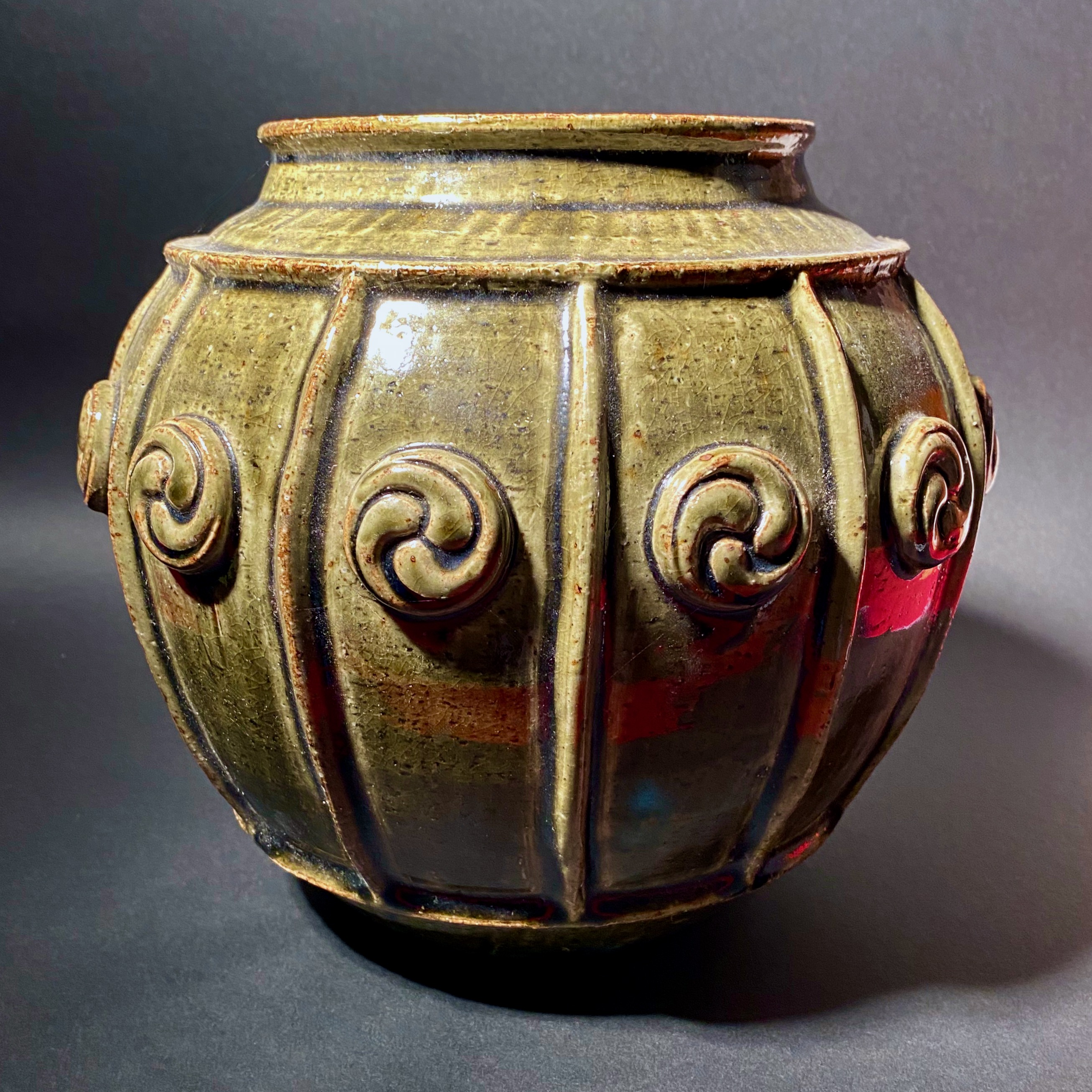

Title: Antique Garden Ceramic Chinese Decorative Pottery Design
Shipping: $29.00
Artist: N/A
Period: 20th Century
History: Art
Origin: Central Asia > China
Condition: Very Good
Item Date: N/A
Item ID: 484
This is a stunning antique Chinese ceramic decorative pottery plant pot from the 1930s to 1960s. It features a wonderful green color and patina, and is in very good condition. The pot measures approximately 8 1/2 x 8 1/2 and was hand-constructed. Today, Chinese pottery and ceramic design continues to flourish and evolve. Contemporary Chinese artists and designers are exploring new techniques and styles, while drawing inspiration from the rich traditions of the past.
Chinese pottery and ceramic design has a long and rich history dating back over 10,000 years. The earliest known examples of Chinese pottery were discovered in the Yellow River Valley, and were made by the Neolithic Yangshao culture around 5000 BC. During the Shang Dynasty (1600-1046 BC), pottery was used for religious and ritual purposes. Bronze was the preferred material for making vessels and other objects, but pottery was used for more practical items such as cooking pots and storage jars. The development of porcelain, which is a type of ceramic made from kaolin clay and fired at high temperatures, is often credited to the Tang Dynasty (618-907 AD). However, some experts believe that porcelain was being produced as early as the Han Dynasty (206 BC - 220 AD). During the Song Dynasty (960-1279 AD), porcelain production flourished and reached new heights of artistic excellence. The Song Dynasty is also known for producing celadon pottery, which is a type of green-glazed ceramic that was highly prized by collectors. The Ming Dynasty (1368-1644 AD) saw the development of blue and white porcelain, which is characterized by its blue decoration on a white background. This style of porcelain became highly sought after and was exported around the world. In the Qing Dynasty (1644-1912 AD), the production of porcelain continued, but there was also a revival of interest in traditional ceramic techniques and styles. Famille rose porcelain, which is characterized by its pink, red, and yellow enamel decoration, was developed during this time.